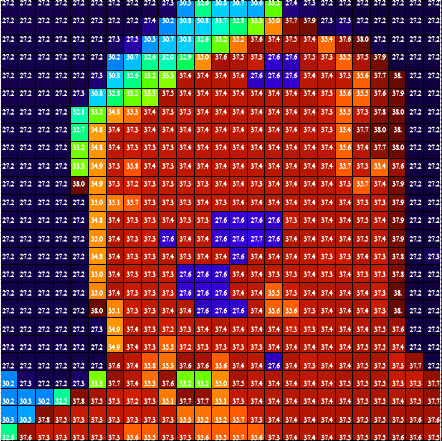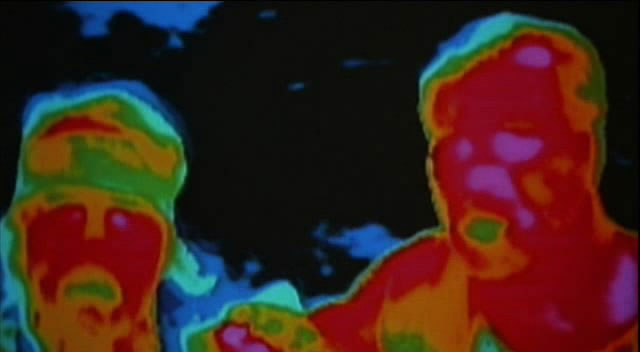
The vision of the Predator species with vision enhanced imaging technology as shown in the movie "Predator" ([1]).
The Predator[1][2] species uses a vision-enhanced visor which enhances animal life and suppresses plant life and inanimate objects.

To understand the mapping that the Predator's visor is using, we need to understand the mapping's domain and range. In other words, the visor's temperature range and wavelength range.
The film's location is reported as being a rain-forrest in Guatemala, with ([2]) reporting an average rain-forrest temperature of 27?C.
On the other hand, for the human body wiki ([3]) reports that the highest body temperature is around 38?C.
To differentiate between the previous two extremes, the visor ranges from deep blue/purple (380nm) (colder, inanimate life), to bright red/white (680nm) (the maximum of the Predator's sensitivity) ([4]), so if w is the color wavelength in nm and T is the temperature in ?C, the mapping which describes the visor's range is:
 (1)
(1)
If we isolate the section of the visor's field of view which shows Dutch (Arnold Schwarzenegger) and divide it into squares we are able to sample the centers using Photoshop.
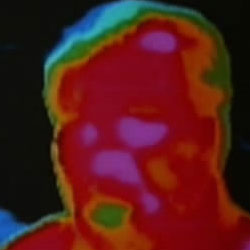
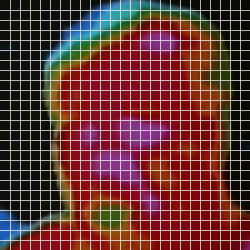
Sampling the image using Photoshop, we extract the RGB values for each square to get a matrix IM[r,c]=RGB[r,c].
The sample matrix IM[r,c] is color enhanced further using the transformation IME[r,c]=IM[r,c]+e, where e is the color enhancing factor.
We then use [5] and the CIE 1931 Color Table to transform the RGB values to wavelengths, as IMEW[r,c]=wCIE1931(IME[r,c]). The result is shown below.
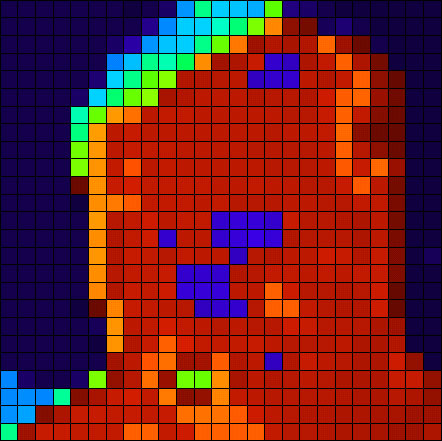
IMEW[r,c] is a 25x25 array of wavelengths. We apply the transformation (1) to the wavelengths found on the sampled and enhanced image to get a list of temperatures, as T[r,c]=T(IMEW[r,c]). These are shown below.
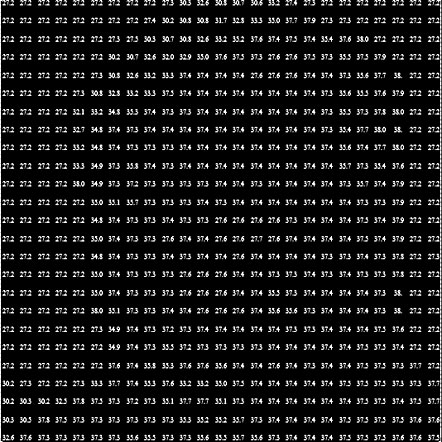
Finally we combine the sampled image with the matrix of temperatures, which shows the complete mapping and how the Predator visor translates temperatures into colors.
